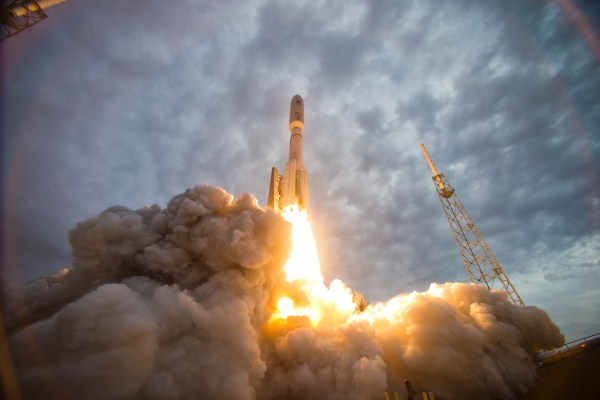It’s been a good few days at Orbital ATK and SpaceX. Right on the heels of major contracts from NASA to resupply the International Space Station, both companies were the first recipients of the Air Force’s first ‘Other Transaction Agreement’ for rocket propulsion system development.
Orbital ATK’s contract, worth $46.9 million, is for the development of new technologies to serve the Evolved Expendable Launch Vehicle, a US Air Force space launch program. Previously reliant on the legacy Atlas V and Delta IV launch systems, the program was re-opened to competition late last year.
In a statement yesterday, the Space and Missile Systems Center at Los Angeles Air Force Base stated that the contracts were part of a broader Air Force plan to move away from the controversial use of Russian-supplied RD-180 engines in the Atlas V.
“Having two or more domestic, commercially viable launch providers that also meet national security space requirements is our end goal,” said Lt. Gen. Samuel Greaves, the Air Force’s Program Executive Officer for Space and SMC commander in the statement.
The need for a replacement engine solution is currently very high, as tensions with Russia rise. Last year, Congress banned the use of the RD-180 engine for military launches as a response to Russia’s annexation of Crimea. The ban was lifted late last year.
Orbital ATK’s contract will fund the development of several propulsion system technologies, such as the Graphite Epoxy Motor (GEM) 63XL strap-on booster, the Common Booster Segment main stage, and an extendable nozzle for Kent, WA-based Blue Origin’s BE-3U/EN engine.
The GEM 63XL booster is a solid-fueled motor intended to replace the Aerojet Rocketdyne AJ-60 booster, currently used on the Atlas V, and is intended to be used on the under-development ULA Vulcan launch system. Details on the Common Booster Segment aren’t known yet.
The development of an extendable nozzle for the BE-3U/EN engine, which burns liquid hydrogen and liquid oxygen, represents a novel direction for Orbital ATK. Extendable nozzles, if able to change the rocket nozzle in flight, can improve efficiency of the engine over a larger envelope of altitude. Traditionally, de Laval nozzles (traditional bell nozzles) are optimized for a specific altitude and atmospheric pressure and operate sub-optimally for a large part of their flight. Altitude-compensating nozzles are an integral part of many new space launch vehicle concepts, and represented a large part of the development effort behind Lockheed Martin’s failed X-33 demonstrator.
The OTA also included a $33.6 million contract to SpaceX for the development of the company’s new Raptor upper stage engine. The Raptor engine will move away from the traditional liquid oxygen and kerosene used in other SpaceX engines, instead using liquid methane as the fuel.
In addition to the large awards given to Orbital ATK and SpaceX, the Air Force is also considering offering further awards to other bidders in the EELV competition later on in the year.
The Air Force funding certainly breathes a fresh life into rocket engine development in the United States. In recent times, the industry has become increasingly reliant on engines from Russia and the Ukraine. While cost-effective, they do come with their problems, as was seen most clearly when an Orbital Sciences Antares Rocket powered by adapted Soviet-Era Kuznetsov NK-33 engines failed catastrophically from a fall 2014 launch from Wallops Island, VA.
